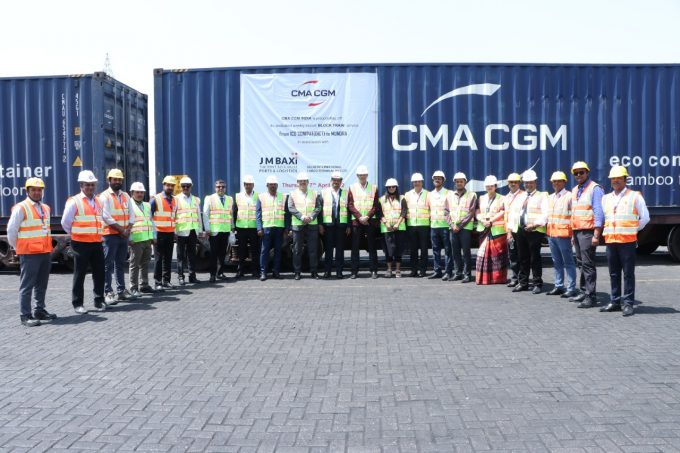Container spot rates have peaked as all major trades see prices fall
There was more evidence in this week’s container port freight markets that peak prices on ...
TFII: SOLID AS USUALMAERSK: WEAKENINGF: FALLING OFF A CLIFFAAPL: 'BOTTLENECK IN MAINLAND CHINA'AAPL: CHINA TRENDSDHL: GROWTH CAPEXR: ANOTHER SOLID DELIVERYMFT: HERE COMES THE FALLDSV: LOOK AT SCHENKER PERFORMANCEUPS: A WAVE OF DOWNGRADES DSV: BARGAIN BINKNX: EARNINGS OUTODFL: RISING AND FALLING AND THEN RISING
TFII: SOLID AS USUALMAERSK: WEAKENINGF: FALLING OFF A CLIFFAAPL: 'BOTTLENECK IN MAINLAND CHINA'AAPL: CHINA TRENDSDHL: GROWTH CAPEXR: ANOTHER SOLID DELIVERYMFT: HERE COMES THE FALLDSV: LOOK AT SCHENKER PERFORMANCEUPS: A WAVE OF DOWNGRADES DSV: BARGAIN BINKNX: EARNINGS OUTODFL: RISING AND FALLING AND THEN RISING

Container lines serving India are seeing greater value in reliable, time-definite containerised rail services as they look to differentiate their operations in the country.
A scheduled round-trip block-train offering is the latest step by CMA CGM towards that goal, with a weekly service connecting Mundra Port and Sonipat, a key hinterland freight location in North India’s Haryana state.
A fully loaded 90 teu train that departed from Sonipat on Thursday marked the launch (pictured above) of what the French carrier called an “agile and flexible solution”.
It added: “CMA CGM is well positioned to serve its customers thanks to a strong presence in India over the past three decades. The dedicated service will increase capacity by an additional 90 teu to meet the growing market demand with a direct connection to major shipping services.”
While block-trains – fixed by a single carrier – have the advantage of priority terminal handling and are, as such, able to turn around a lot quicker, round-trip contract arrangements allow shippers the opportunity to move freight in both directions with predictable haulage cost benefits, according to industry sources.
The carrier said: “The export connection will be followed by the import block-train from Mundra to Sonipat every Sunday (which the group has already been operating since 2021). In 2021 alone, the group in India successfully carried 8,878 teu of imports in its two weekly block-train services between Mundra and Sonipat.”
For CMA CGM, the rail expansion is seen as a big step to extending its reach beyond port-to-port shipping in India, as the concept of an integrated, one-stop shop freight experience for customers takes deeper roots across the industry.
CMA CGM offers 12 weekly long-haul calls – mostly out of Nhava Sheva, Mundra and Pipavav, including India-US east coast, India-Europe and Middle East-India-west Mediterranean routings, operated in consortium arrangements.
In recent years, the carrier has also made significant strides in the operation of double-stacked trains from Mundra and Pipavav, which can generally carry 180 teu, compared with 90 teu on a normal haul.
One factor driving up carrier-led rail solutions in India is their service efficiency expectations around the launch of a dedicated freight corridor (DFC), designed to connect northern hinterlands to west coast ports, and some stretches of this national project have already gone live.
“Since the trains that run on the DFC can take greater payloads, it provides logistics companies a solution to speed up the transport of cargo and containers through Trucks-on-Trains, also reducing time and improving vehicle productivity,” said Julian Bevis, board member at APM Terminals Pipavav.
“Apart from this, the development of multimodal logistics parks around the DFC will increase the effectiveness of road transport,” he added.
You can contact the writer at [email protected]
Comment on this article